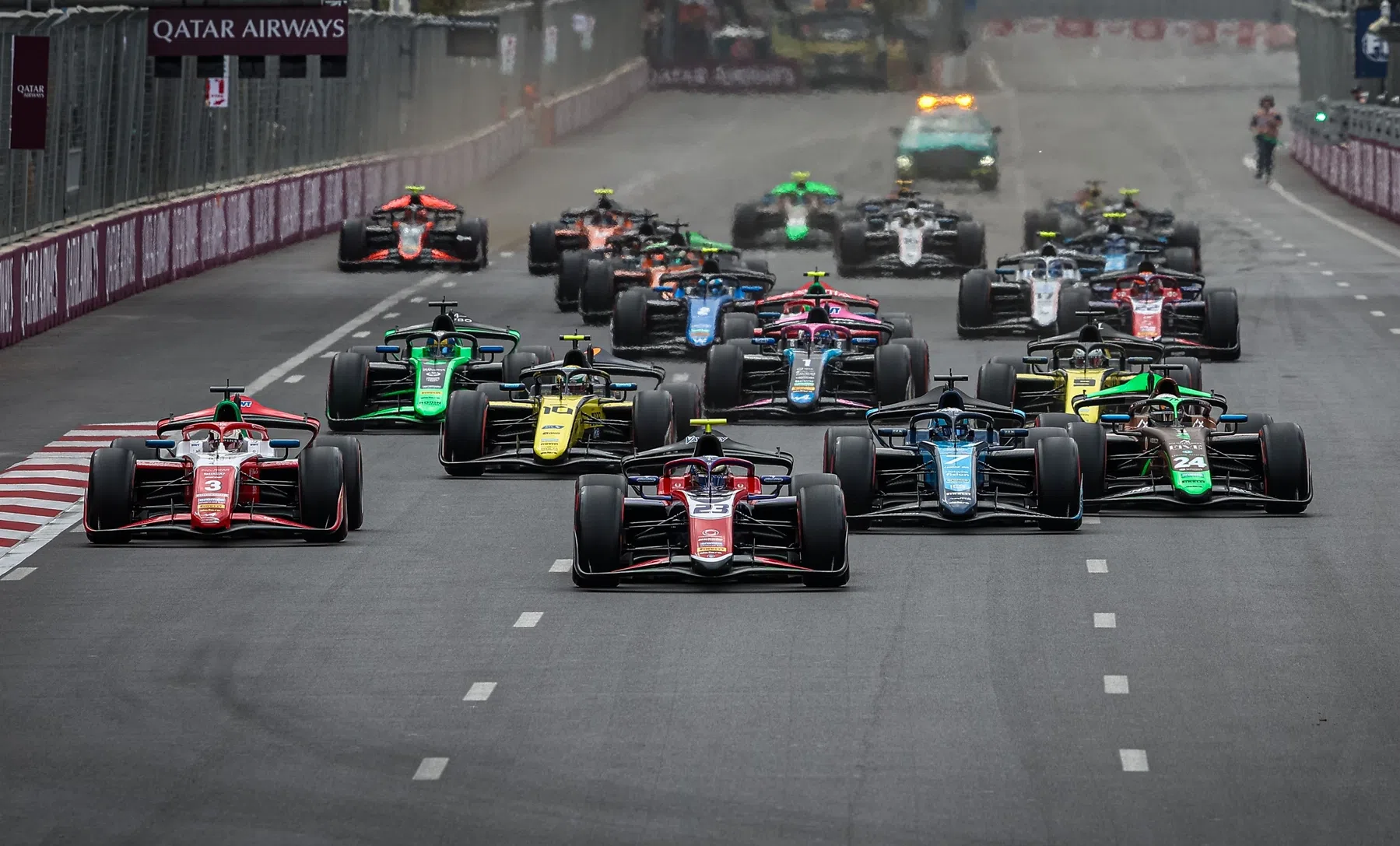Interview

In the footsteps of Antonelli and Bearman: 'F2 and F3 are booming'
- Ludo van Denderen
With Franco Colapinto, Oliver Bearman, Jack Doohan and Andrea Kimi Antonelli, drivers advancing from the step-up classes to Formula 1, Formula 2 and Formula 3 are currently more than demonstrating their worth. CEO Bruno Michel can be satisfied: The junior series is thriving like never before, both financially and sportingly. "At the moment, the business is booming. There is money, there are drivers. But we always need to be very careful," states the Frenchman.
Sometimes it is unfortunate. The gates to the circuit only just open in time for the very first race of the Sunday during a Grand Prix weekend. In Monza, the red lights went out for the Formula 3 drivers as early as 8.30 in the morning, with hardly any spectators in the stands. Those there saw an epic battle for the title. Leonardo Fornaroli eventually proved to be the strongest. Perhaps an unknown name now, but drivers like Fornaroli are the future of motorsport.
Michel enjoys 'his' stars of the future
Antonelli, Bearman and Colapinto were not household names with the general public until recently. They are already making (or have made) the transition to Formula 1 and their achievements positively radiate from F2 and F3. "It's important to have them," Bruno Michel said during an exclusive interview with GPblog. "Bearman did a job in Jeddah with Ferrari, and it was fantastic. We need [as a series], these kind of guys who are more stars than others."
But, Michel argues: "What I'm interested in are the drivers that we get to Formula One. Piastri was never a star when he was in F3 and in F2. He won F3 and F2. Then he got one year to prepare himself and then he got to F1. Having stars is not really the issue. George Russell was not such a star when he was in F3 and F2. Charles Leclerc was not either. But they did the job and they arrived in F1 and they were ready. That's when I'm happy."
Paydrivers a thing of the past in motorsport?
One disadvantage of motorsport is that drivers often have to finance their seats themselves. A driver can be as good as they are, but finding a seat in the sport becomes difficult without the budget. However, Michel refutes that the current F2 and F3 grids have drivers who don’t really belong there. "It's quite unfair to say that. In F2 and in F3, the drivers are bringing the budgets. So sometimes they have sponsors, sometimes the team is helping with the sponsors."
"But it's the way it's working. After that, sometimes in F2 and in F3, we have very, very strong grids. In some other years, the grids are not as good. And that's also because some years, like this year, the F2 grid is amazing. We're going to put two, three, four drivers in Formula 1. I don't know how many. So that's a fantastic year. We had a year where we had Russell, Norris, and Albon. So that really depends. I think it's quite unfair to say the driver is there only for money. It's not true. Firstly, you need to have a certain level to race in Formula 2. You need to have a certain experience. You need to have a grade 3 license. It's not something that you and I can go and decide to race in Formula 1."
F1 academies are a godsend for juniors
Bruno also believes that a driver who is really good enough will eventually find their way to the top in motorsport. "I've never seen a driver at this kind of level not being able to progress because of money issues. Because now, the good thing is that most of the F1 teams have academies. They're looking for drivers. And when the driver has talent, they're picking him up and they're helping him. It doesn't mean that they put their whole budget on, but they're really helping him quite a lot."
Next season, (former) F2 talents Bearman, Doohan, and Antonelli will drive in Formula 1, and Colapinto is currently driving on behalf of Williams. According to Michel, they prove that F1 teams' training programmes are working. "It's those guys; it's not only that they're racing in F2 and F3, and they're having good results. But they're working a lot with the team. They're doing thousands of kilometres of testing in old cars. They're working on the simulator. They're at the track for the F1 races with the headsets on to understand what's going on and learn. So all these things are really important."
F2 and F3 in one cycle
If anything should be remembered after speaking to Michel, it is that F2 and F3 are currently looking good. So they are managing to get future stars through to Formula 1, and financially, the teams are healthy. "Yes, at the moment they are," Michel responds to that last topic. "It's not always been the case. Sometimes it was more difficult. The motor racing business is in cycles a little bit and sometimes we're on the top of the cycle. Sometimes it's more difficult. There have been some difficult years."
"I remember after the crisis of 2008, the two or three following years, some of the teams were making money, some of the teams were balancing, some of the teams were losing a bit of money. So that happened. At the moment, the business is booming. There is money, there are drivers. But we always need to be very careful to keep the costs as low as possible because we know that this is not for granted."

